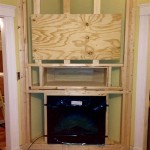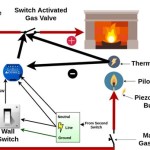Understanding Used Fireplace Inserts and Wood Stoves
The appeal of a wood-burning fireplace or stove lies in its ability to provide warmth, ambiance, and a sense of connection to traditional heating methods. However, installing a new fireplace insert or wood stove can be a significant investment. Therefore, exploring the market for used fireplace inserts and wood stoves presents a potentially cost-effective alternative. This article examines the key considerations involved in purchasing a used fireplace insert or wood stove, highlighting the advantages, disadvantages, and crucial factors to consider to ensure a safe and satisfactory experience.
A fireplace insert is a self-contained heating appliance designed to be installed within an existing fireplace opening. It typically features a firebox, a combustion air system, and a flue connector. The purpose of an insert is to improve the heating efficiency of a traditional open fireplace, which often loses a significant amount of heat up the chimney. Wood stoves, on the other hand, are freestanding appliances designed to heat a room or area directly. Both inserts and stoves burn wood as fuel, providing radiant and convective heat.
Purchasing a used heating appliance can be a financially sound decision, but it necessitates careful evaluation and due diligence. Factors such as the age and condition of the unit, its efficiency rating, and compliance with local regulations must be thoroughly investigated before making a purchase. Failure to do so could result in safety hazards, inefficient heating, and potential code violations.
Cost Savings and Environmental Considerations
The primary motivation for acquiring a used fireplace insert or wood stove is often the reduced upfront cost. A used unit can be significantly less expensive than a new one, allowing individuals to enjoy the benefits of wood heating without incurring a substantial initial expense. This is particularly advantageous for individuals on a limited budget or those seeking a supplemental heating source.
Beyond the immediate cost savings, opting for a used appliance can be seen as an environmentally responsible choice. Reusing existing equipment reduces the demand for new manufacturing, conserving resources and minimizing the environmental impact associated with production and transportation. By extending the lifespan of a functional appliance, one contributes to a more sustainable consumption pattern.
However, it's crucial to recognize that older models may not be as efficient as newer, EPA-certified stoves. Older stoves often release more particulate matter into the atmosphere, contributing to air pollution. While the initial cost savings may be attractive, it's essential to consider the long-term environmental impact and potential for higher fuel consumption.
The efficiency of a wood stove or insert is measured by its ability to convert the energy contained in the wood into usable heat. Newer, EPA-certified models are designed to burn wood more completely, reducing emissions and increasing efficiency. When evaluating a used unit, it's important to ascertain its efficiency rating and compare it to current standards. A less efficient stove will require more wood to produce the same amount of heat, potentially offsetting the initial cost savings.
Assessment of Condition and Functionality
A thorough inspection of the used fireplace insert or wood stove is paramount to ensuring its safe and efficient operation. This assessment should encompass both the physical condition of the appliance and its functionality. A qualified professional, such as a certified chimney sweep or heating technician, can provide a comprehensive evaluation and identify potential problems that may not be readily apparent.
The inspection should begin with a visual examination of the firebox, looking for signs of cracks, warping, or corrosion. These defects can compromise the structural integrity of the appliance and pose a safety hazard. The door should fit snugly and seal properly to prevent air leaks and ensure efficient combustion. The glass, if present, should be intact and free of cracks or damage.
The flue connector and chimney adapter should also be carefully inspected for signs of rust, corrosion, or damage. These components are crucial for safely venting combustion gases out of the home. Any deterioration in these areas could lead to carbon monoxide leaks or chimney fires.
The internal components of the stove, such as the baffle, air tubes, and catalytic combustor (if applicable), should be examined for wear and tear. These components play a vital role in promoting complete combustion and reducing emissions. Damaged or missing components can significantly reduce the efficiency of the stove and increase pollution.
Beyond the physical inspection, it's essential to test the functionality of the stove. This involves lighting a small fire and observing the combustion process. The stove should draft properly, with smoke flowing up the chimney without backdrafting into the room. The air controls should function smoothly and allow for precise adjustment of the burn rate. The stove should also maintain a consistent temperature and produce a clean, efficient burn.
If possible, obtain the operating manual for the used stove. This document provides valuable information on the proper installation, operation, and maintenance of the appliance. It also includes safety guidelines and troubleshooting tips.
Regulatory Compliance and Safety Considerations
Before purchasing a used fireplace insert or wood stove, it's imperative to ensure that it complies with all applicable local, state, and federal regulations. These regulations are designed to protect public health and safety by setting standards for emissions, efficiency, and installation practices. Failure to comply with these regulations can result in fines, penalties, and the forced removal of the appliance.
The U.S. Environmental Protection Agency (EPA) has established emission standards for wood stoves and fireplace inserts since 1988. These standards limit the amount of particulate matter that can be released into the atmosphere. Newer stoves are required to meet more stringent emission standards than older models. When evaluating a used stove, it's important to determine whether it is EPA-certified and meets current emission standards.
Local building codes may also impose specific requirements for the installation of wood stoves and fireplace inserts. These requirements may include minimum clearances from combustible materials, proper chimney construction, and the use of approved flue liners. It's essential to consult with local building officials to ensure that the installation complies with all applicable codes.
Safety should be the top priority when considering a used fireplace insert or wood stove. Carbon monoxide poisoning is a serious risk associated with wood-burning appliances. Carbon monoxide is a colorless, odorless gas that can be produced by incomplete combustion. Exposure to high levels of carbon monoxide can be fatal.
To prevent carbon monoxide poisoning, it's essential to install and maintain carbon monoxide detectors in the home. Detectors should be placed near sleeping areas and on each level of the dwelling. The detectors should be tested regularly to ensure that they are functioning properly. It is also crucial to have the chimney inspected and cleaned annually by a qualified professional.
Furthermore, it’s important to operate the stove according to the manufacturer’s instructions and use seasoned wood. Burning unseasoned wood can produce excessive smoke and creosote, which can increase the risk of chimney fires. Creosote is a flammable substance that accumulates in the chimney over time. Regular chimney cleaning is essential to remove creosote and prevent chimney fires.
In conclusion, purchasing a used fireplace insert or wood stove can be a viable option for individuals seeking a cost-effective heating solution. However, a thorough assessment of the appliance's condition, functionality, and regulatory compliance is crucial to ensuring safety and efficiency. Consulting with qualified professionals, such as certified chimney sweeps or heating technicians, can provide valuable insights and help avoid potential pitfalls. Prioritizing safety and adhering to best practices will enable individuals to enjoy the warmth and ambiance of wood heating while minimizing risks and maximizing the benefits.

Rais 60 Insert Wood Fireplace For

Preowned Used Fireplaces Stoves Inserts For At Warming Trends

Buck Stove Model 91 Insert Fireplace Buy Hearth Patio

High Quality Decorative Indoor Used Wood Stove Insert Burning Fireplace China Made In Com

Wood Burning Fireplace Insert In The Fairfax Va Area Service

High Quality Decorative Indoor Used Wood Stove Insert Burning Fireplace China Made In Com

Why A Wood Burning Fireplace Insert Bethesda Md Service
.aspx?strip=all)
Cost Of Operating A Wood Insert Cord Calculator Regency

Us Stove Wood Burning Epa Certified Fireplace Insert For 1 200 Sq Ft Rooms At Tractor Supply Co

Fireplace Insert Guide Fireplaces Direct Learning Center








